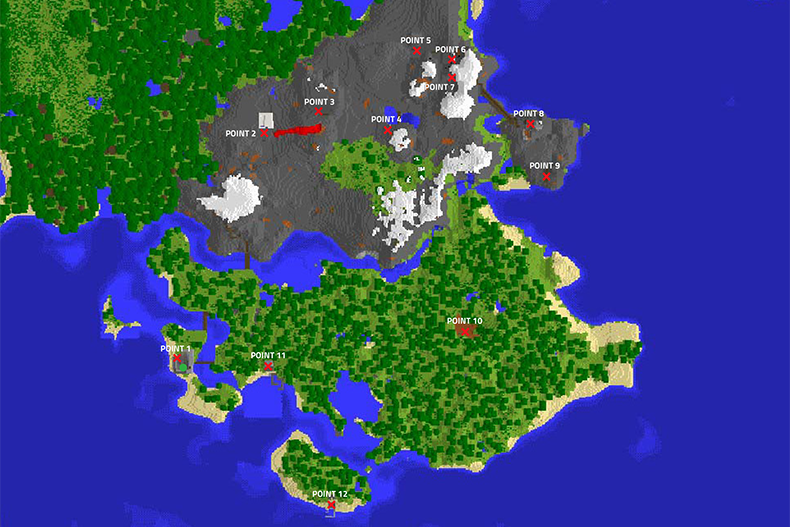Lecture: BetterGeo HUNT
BetterGeo HUNT is an exercise that develops orientation skills, teaches about the importance of circular economy for our society and improves the students' ability to work in a team. To successfully find the hidden treasure, the teams must complete an orienteering route and solve various tasks. They must find points with the help of a map and a compass in the game. The tasks touch every step in the raw materials circular economy scheme. In the end, each team must answer three questions related to the tasks that they solved to find a hidden treasure.
With computers.
What do you need?
PowerPoint presentation for teachers [link]
A computer for each group of students. The computer needs to have installed BetterGeo and the ResetMap-mod (see installation guide). A special map is made for this exercise, which can be found through a link: [link]
A3 worksheet with Minecraft map [link]
Orientation task [link]
(optional) Compasses or tablets/mobile phones with uploaded app Compass Galaxy: https://play.google.com/store/apps/details?id=pl.nenter.app.compass_app
Age and class size?
The exercise is suitable for age groups from 10 to 12 years. For the exercise, the students are divided into groups, 4 students per group is recommended. A smaller class of up to 15 students is recommended to perform the exercise.
Time needed?
The exercise takes about 2 school hours. The duration of the exercise depends slightly on the teacher's decision what to include in the introduction and discussion. The exercise time also depends on the students ’experience with the Minecraft game and can take longer if many students have never played the game.
Difficulty level?
Medium. Depending on the age of students, the exercise can be adapted to the need of specific age groups and learning subjects. Students who know the game Minecraft and have already played it complete the task faster.
Introduction
Background for teachers:
In the past, a common production approach in consumption of raw materials was a linear one - raw materials were used to make a product, and when we no longer had any use for that product, it was thrown away. Every step in the production process generates additional waste that must be disposed of. As we became more aware of environmental problems and the growing challenges of finding raw materials, the economies of many countries developed a recycling approach, where materials are collected at the end of their life and reintroduced into the production chain; for example, waste glass is used to make new glass and waste paper to make new paper. Even with these improvements, waste is still generated at every stage of production that is not treated in a recycling stream.
One of the most important changes in modern society is the shift to green technologies and low-carbon energy sources. This is fundamentally shifting our role from being a consumer of raw materials to a user of raw materials. Raw materials such as wood, coal, oil, petrol and even uranium are physically consumed during their use and cannot be recovered. However, many components of modern technologies are not consumed (i.e. most of metals remain their original properties even after recycling). Therefore, once a raw material is in the value chain, it can be predictably preserved with recycling with the right planning of the raw material value chain. Development towards a more holistic circular economy is supported throughout Europe and the world.
A circular production route means that waste is minimized at every step, by making products and materials more efficiently and by recovering materials at every stage. When new raw materials are needed, they must be obtained in a sustainable way, so that the natural and human environment is preserved. Circular Economy is about much more than just recycling and reuse. It is about sustainable design, platform sharing, product as a service, extending the life of products and much more. A Circular Economy is an economic system that aims to eliminate waste and keep resources within the production cycle. It incorporates the sustainable design from the creation of a product through the entire product life cycle, thereby extending the use of materials. In this model, materials are not discussed in terms of life- cycle or "cradle to grave" perspective, but rather the ideas of reuse, sharing, repair, refurbishment, remanufacturing and recycling are used to create a closed system that minimizes the consumption of material and energy resources and the generation of waste, pollution and emissions.
The exercise uses the phrase circular path of raw materials instead of a circular economy, as it is easier for students to understand.
Preparation for the exercise:
The teacher downloads and prints out all the materials needed. In the first stage, each student gets the worksheet for the orientation task and phone/tablet with the app (or teachers can use only one tablet to show compass to all the students). In the second stage, the teacher divides students into groups and each group needs a computer with installed Minecraft and exercise map, and the A3 worksheet with the Minecraft map.
Step-by-step instructions
Step 1:
The teacher gives a short interactive introduction to Minecraft, the raw materials and circular economy prepared on PowerPoint (Slides 1 - 4). Then the teacher presents the orientation, how we orientate ourselves with the compass and how we orient ourselves with the map (Slides 5 - 10). The students do quick tasks on slides 8 (orientation task) and 9 (compass or compass app).
Step 2:
The teacher gives them instructions on how to solve the Minecraft task (Slide 11) and then divides the students into groups. Each group has a computer and receives the A3 worksheet with the Minecraft map. The teacher needs to emphasize that students need to read and follow the instructions, otherwise they cannot find the treasure.
Step 3:
Students need to find a point and solve a specific task on that point. They can orientate themselves with a compass in the game and a map. On the last point (point 12) students need to answer three questions related to the task on the orientation route. When they answer these three questions correctly, they find the hidden treasure.
Step 4:
Teachers discuss different stages of the circular economy/circular path of raw materials with students and connect them to the points in the BetterGeo HUNT (slide 12). On the circular path of raw materials (page 2 on the worksheet), students write down where they would place certain points according to the topic of the task. Students analyze the path of raw materials in the circular path of raw materials and compare their current behavior with the one proposed by the new circular economy scheme.
Evaluation
Follow up activity:
Students can have orientation day, where they try to orientate themselves in real life (with a map and compass) – real world treasure hunting.
Students can analyze the path of raw materials in a circular economy for specific object that they used every day (which raw materials, where we get raw materials for this, how long is a procedure…). They can do a short presentation or make poster.


